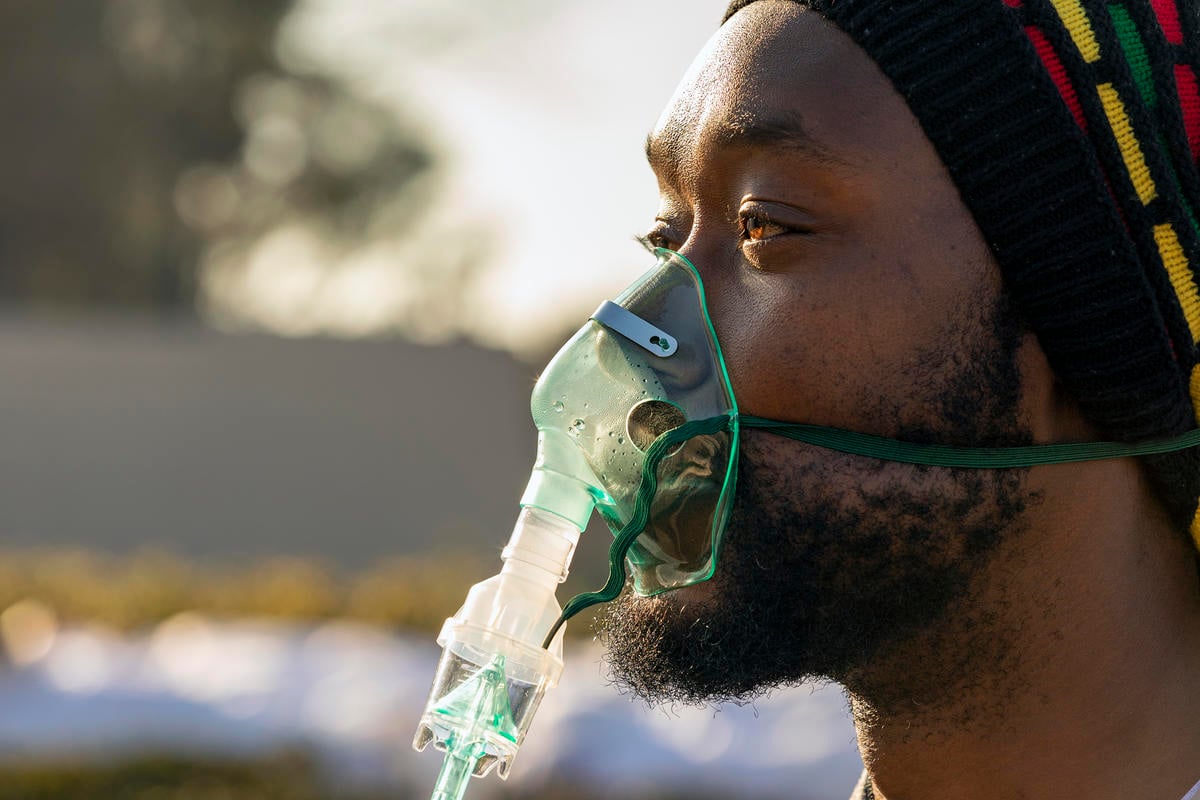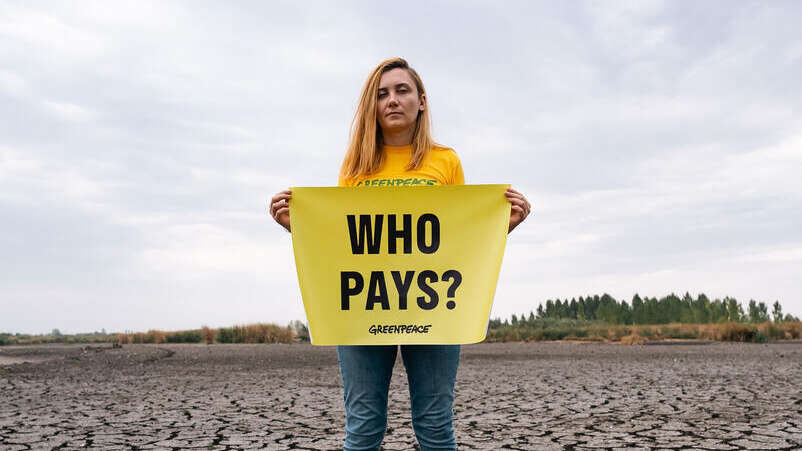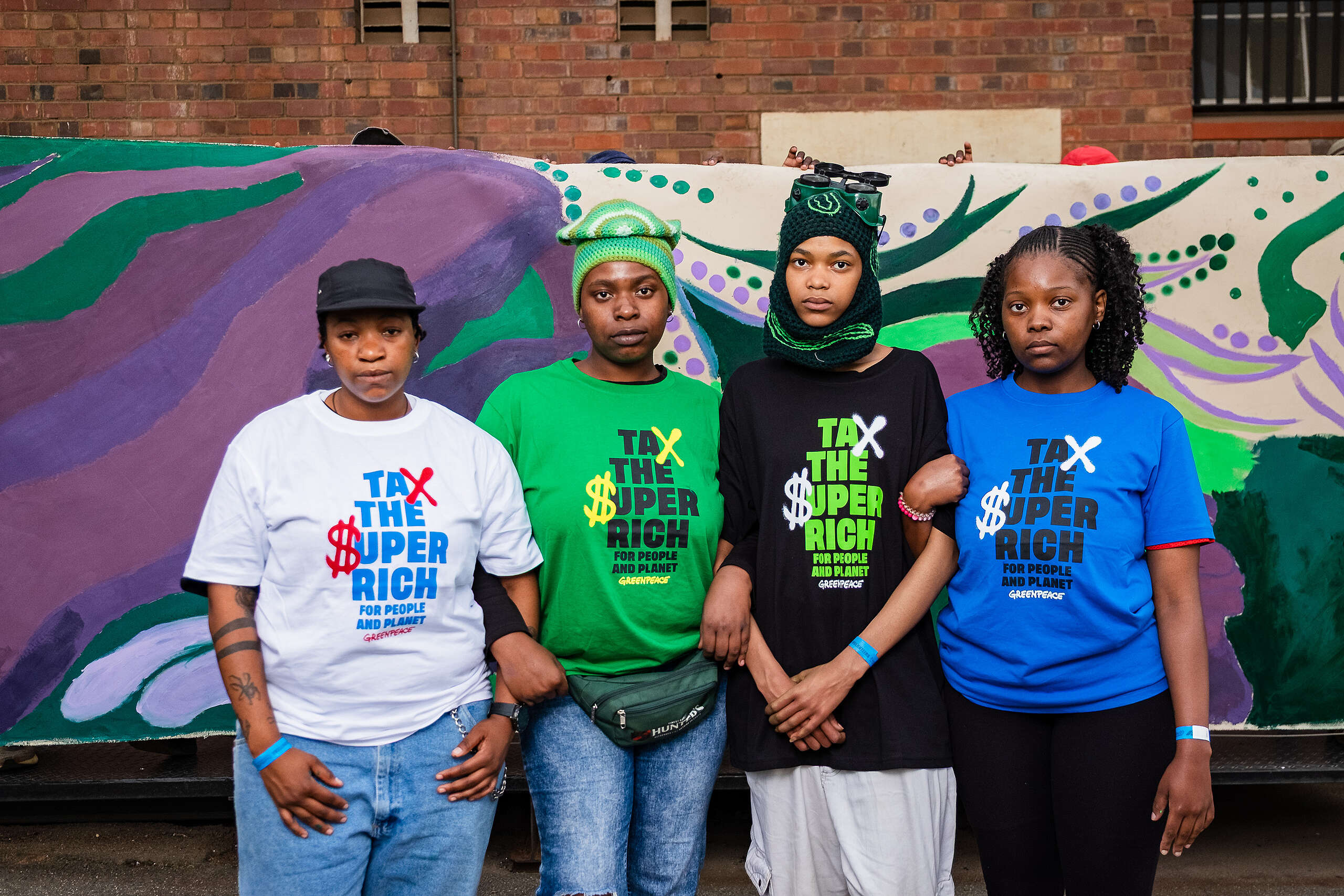
Extreme weather events are becoming more frequent and severe in Sub-Saharan Africa, with countries like South Africa experiencing back-to-back climate chaos. Patients in the country’s rural areas have to skip or stop medications for their chronic illness as storms and floods batter clinics.
For Noford Liwane, missing a clinic appointment is no longer an exception, it has become routine whenever it rains. The 67-year-old, who lives in the country’s rural Eastern Cape province, relies on the nearby Gwadana Clinic, a dilapidated facility described by locals as no more than a single garage structure. A storm blew away the clinic’s waiting area shelter more than two years ago. Since then, patients have had to wait in the open, exposed to searing heat, winter winds or heavy rain.
“When it rains, I just stay home,” said Liwane. “There is no shelter, and the building leaks. It is better to wait for another day than to sit in the cold and rain. This is a problem because I end up defaulting on my hypertension medication.”
Liwane lives in a remote village outside iDutywa, where travel to alternative health centres, often more than 30km away, is unaffordable for many who rely on government social grants.
Climate-damaged infrastructure risks lives
A 2025 study by Walter Sisulu University researchers found that damaged health infrastructure in rural areas is a major contributor to non-adherence to medication. The study highlighted reduced access to medication, inadequate services, and financial hardship as key reasons to stop or skip treatment, with serious consequences for health and mortality.
As climate change intensifies, South Africa’s overstretched public health system is buckling under the weight of storms, floods and rising temperatures.
Gwadana is one of 142 public health facilities in six provinces that were damaged by extreme weather between 2023 and 2025, according to South African health minister Aaron Motsoaledi. The clinic serves about 20 villages under the Mbashe local municipality, treating hundreds of patients each month, many of them on chronic medication. But worsening weather and crumbling infrastructure have disrupted services and made access difficult.
“I live about 17km from the clinic. On appointment days, I leave home at 5am and hope to catch a village bakkie [a small truck],” said Liwane. “People are forced to choose between paying for transport or buying food.”
Community member Malwande Jama said residents often hire private vehicles, paying more than R2,000 (€100) sometimes, to transport patients to the closest hospital in Gcuwa. “By the time you arrive, it is often too late. In some cases, the person has already passed away,” he said.
In Kariega, 55-year-old Vukile Mtika from KwaNobuhle (also in the Eastern Cape) said his local clinic, Laetitia Bam, had been flooded twice, most recently in early 2024. “Services were moved to a church building that was too small. I had to change clinics and now spend money on transport.”

Sign the pact, record your story. Join the global movement to make polluters pay.
Join the movementClimate damage affecting healthcare facilities across South Africa
Last month Motsoaledi gave a provincial breakdown after a parliamentary question asking how many South African health facilities had been damaged due to extreme weather events:
- In Limpopo province, during the 2024/25 financial year, 12 health facilities sustained damage, with repair costs estimated at more than R4.2 million.
- In the Eastern Cape, 17 health facilities were damaged by storms in the 2024/25 financial year, with the cost of repairs projected at more than R128 million. The provincial health department is still awaiting a budget allocation for the repairs.
- In Gauteng province, four health facilities were damaged in the 2023 24 financial year, with repairs costing more than R15 million.
- KwaZulu-Natal province recorded six damaged health facilities in the 2023/24 financial year, and 10 more facilities sustained damage in 2024/25, bringing the total cost of repairs to more than R88 million.
- In North West province, three health facilities were damaged by storms in 2023/24, and 27 in 2024/25, with estimated damages exceeding R40 million. The department is awaiting funding for repairs.
- In the Western Cape province, 12 health facilities were damaged in the previous financial year, and 35 additional facilities were affected in 2024/25. The total estimated cost of damages stands at over R19 million.
Motsoaledi said South Africa’s Free State and Northern Cape provinces had reported no damage, while he was still awaiting figures from its Mpumalanga province. He admitted that delays in procurement and budget approvals had left many facilities unrepaired.
Siyanda Vazi, founder of the Ubomi Foundation, said his Eastern Cape-based organisation had assisted storm-affected communities, focusing on the most vulnerable. “We have seen how the collapse of infrastructure affects the elderly, people with disabilities and those with chronic illnesses like diabetes and hypertension,” said Vazi. “Some people are now forced to travel over 20km just to collect medication. Our work includes emergency relief and partnering with mobile clinics.”
In Limpopo, workers at the provincial medical depot said they had raised the alarm in 2021 when heavy rains damaged the roof. “No repairs have been done. When it rains, water floods the building and the carpets smell for days. It is unsafe,” one employee said.
South Africa’s health minister acknowledged the severity of the crisis in his parliamentary response, saying infrastructure remains one of the biggest threats to service delivery in the public healthcare sector. Delays had been caused by budget constraints and slow procurement processes. In some provinces, funds earmarked for storm damage were reportedly redirected to upgrade ageing infrastructure, driving up costs while leaving storm-hit facilities unrepaired, he said.
Vulnerable groups are the most affected
Thandeka Kathi, programme head of pollution & climate change at the Centre for Environmental Rights, told the Sunday Times that extreme weather events – such as floods, heatwaves and storms exacerbated by climate change – are increasingly threatening the functionality and safety of public health facilities, especially in vulnerable communities.
“When clinics or hospitals are damaged or rendered inaccessible, this directly impacts the constitutional right to access healthcare services, disproportionately affecting those who already face systemic barriers to care.”
In the event of flooding, emergency medical services may be unable to reach patients in time, resulting in preventable health crises.
“Studies have shown that extreme heat can have adverse health consequences, particularly for pregnant individuals and people with chronic conditions. Despite this, many public health facilities remain ill-equipped to respond to or withstand such conditions, highlighting an urgent need for climate adaptation planning within the health sector,” Kathi said.
Interruptions in chronic medication such as antiretrovirals, tuberculosis treatment or hypertension and diabetes care could have long-term adverse health consequences, increase mortality and place additional pressure on already overburdened facilities in marginalised communities.
There was limited investment in upgrading existing facilities to withstand extreme weather events, and emergency plans were underdeveloped or poorly implemented.
Ntombi Maphosa, an attorney at the Centre for Environmental Rights, said that for the government to adequately protect health infrastructure it should allocate dedicated funding for climate mitigation and adaptation in the health sector. “Government should integrate climate risk assessments into the design, construction and maintenance of all public health facilities,” Maphosa said.
South African national department of health spokesperson Foster Mohale said its infrastructure unit had been working closely with provincial departments to assess the extent of damage and draw up contingency plans to restore healthcare service delivery while a long-term plan is developed.

Sign the pact, record your story. Join the global movement to make polluters pay.
Join the movement“The recent storm has negatively impacted healthcare service delivery, mostly in the Eastern Cape and some parts of KwaZulu-Natal. A number of elective surgeries had to be postponed/cancelled, while some stable patients were discharged. Critical patients were transferred to other health facilities.
“Health workers such as forensic pathologists were roped in from other provinces to fast-track postmortems or autopsies, which helped to ensure that families find closure and bury their loved ones without waiting longer,” Mohale said.
For patients like Liwela, the consequences are devastating. “We want to take our medication. But how, when the clinic is falling apart?” she asked.
A version of this article was originally published in Sunday Times on 20 July 2025.
Yoliswa Sobuwa is a senior health journalist based in Johannesburg, South Africa.
Guest authors work with Greenpeace to share their personal experiences and perspectives and are responsible for their own content.



